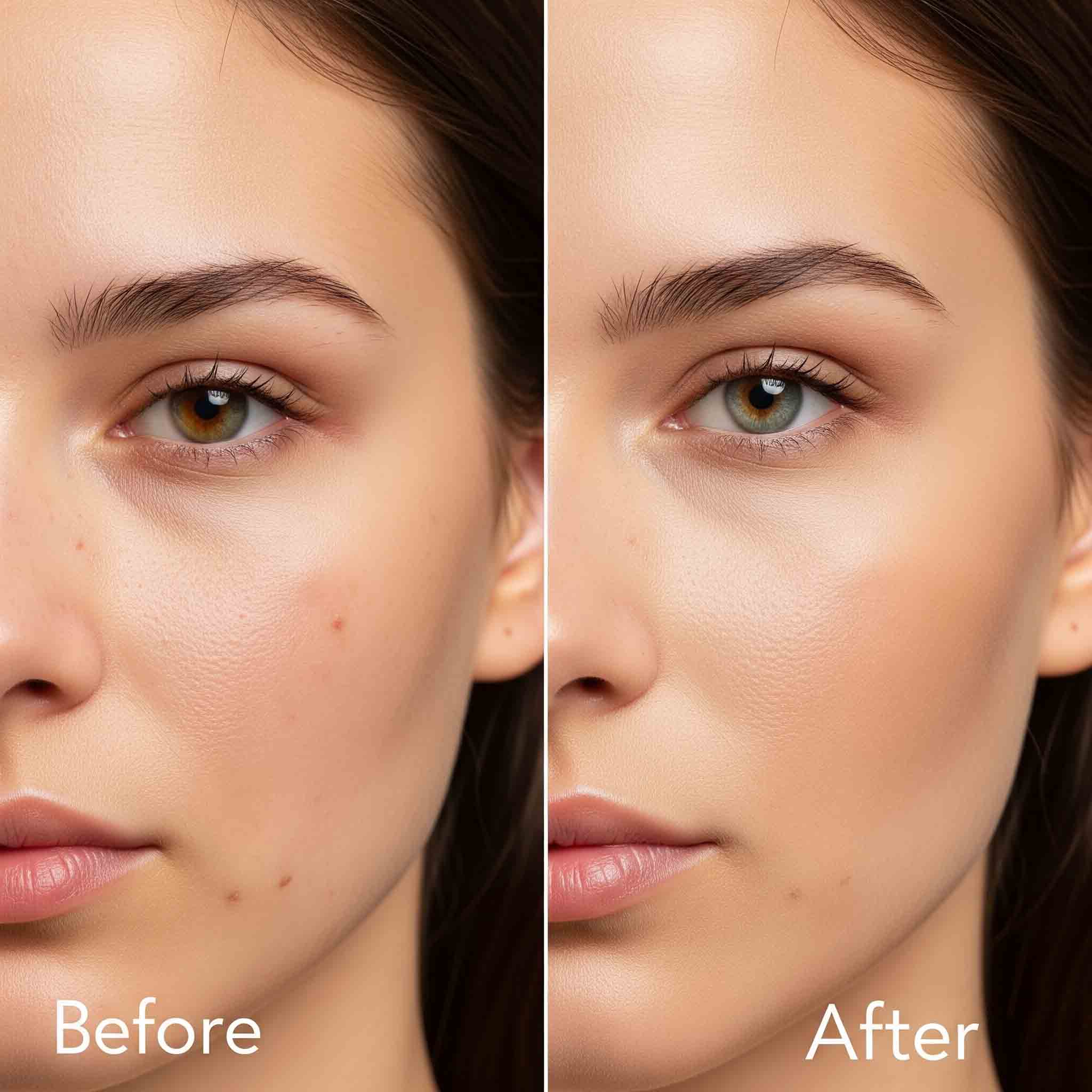Have you ever seen a portrait that looks absolutely perfect, but still completely natural? A photo where the skin is smooth, the eyes sparkle, and the subject looks like the best version of themselves, not a plastic-y, over-edited version?
That’s the difference between basic editing and the true art of portrait retouching.
It’s a skill that goes beyond simple filters. It’s about enhancing a person’s natural beauty without altering their core features. For photographers, models, and anyone who wants to showcase their best self, mastering this art is a game-changer.

What is Portrait Retouching?
At its core, portrait retouching is the process of perfecting an image after it’s been shot. Unlike a quick filter or preset, it’s a careful, multi-step workflow designed to improve an image’s quality while maintaining a realistic and authentic feel. The goal is never to create a fake or unrecognizable image. Instead, it’s about refining the details to present the subject in the best possible light.
Key Techniques of Professional Portrait Retouching
To achieve that flawless yet natural look, professionals rely on a set of advanced techniques. Here are some of the most important –
1. Skin Smoothing & Texture
One of the biggest challenges is making skin look smooth without losing its natural texture. The most effective method is Frequency Separation. This technique splits the image into two layers: a “low frequency” layer for color and tone, and a “high frequency” layer for texture and detail. By editing these layers separately, you can fix blotchy skin tones and remove blemishes while keeping all the natural skin pores and texture. The result is smooth skin that doesn’t look fake.
2. Blemish and Imperfection Removal
This is the most direct part of the process. Using tools like the Spot Healing Brush, professionals remove temporary imperfections like pimples, scars, stray hairs, or dust specs. The key is to be selective and remove only what is temporary or distracting, preserving the person’s unique character.
3. Color Correction and Toning
A professional retouch often includes a precise color correction process. This ensures the skin tones are accurate and the colors in the photo are balanced. You can also use color grading to set a specific mood or style for the image, making the colors pop without looking oversaturated.
4. Dodging and Burning
A classic darkroom technique, Dodging and Burning is used to selectively lighten (dodge) or darken (burn) areas of the image. When applied to a portrait, it can be used to add dimension to the face, sculpt cheekbones, enhance the eyes, and create a more dynamic, three-dimensional look.
5. Eye and Teeth Enhancement
The eyes are the soul of any portrait. Retouching can make them stand out by subtly sharpening the irises, adding a touch of light, or removing redness. Similarly, teeth can be brightened and whitened to a natural shade, but it’s crucial not to make them unnaturally white.
The Secret to a Natural Look: Less is More
The best beauty retouching is often invisible. The difference between a professional and an amateur is knowing when to stop. Here’s how professionals get it right.
- Subtlety is Key: All edits should be applied with a light hand. The goal is to correct, not to change.
- Know Your Audience: A high-end fashion shoot requires a different style of retouching than a family portrait. The context should always guide your process.
- Avoid Common Mistakes: “Plastic skin” is the most common mistake. Over-smoothing can remove all texture and make the subject look like a mannequin. Over-whitening teeth or eyes can also make a person look unnatural.
Why Trust a Professional Portrait Retouching Service?
While you can learn these techniques on your own, a professional photo retouching service offers several key advantages –
- Expertise and Consistency: Professionals have years of experience with complex software and a trained eye for detail. This ensures consistent, high-quality results.
- Time-Saving: Retouching is a time-consuming process. Outsourcing allows photographers and businesses to focus on their core work.
- The Right Tools: Professionals have access to top-of-the-line software and hardware to get the job done efficiently and accurately.
Whether you’re a photographer looking to perfect your workflow or an individual wanting to enhance your photos, a professional portrait retouching service is an invaluable asset.
Ready to see how professional retouching can transform your images?